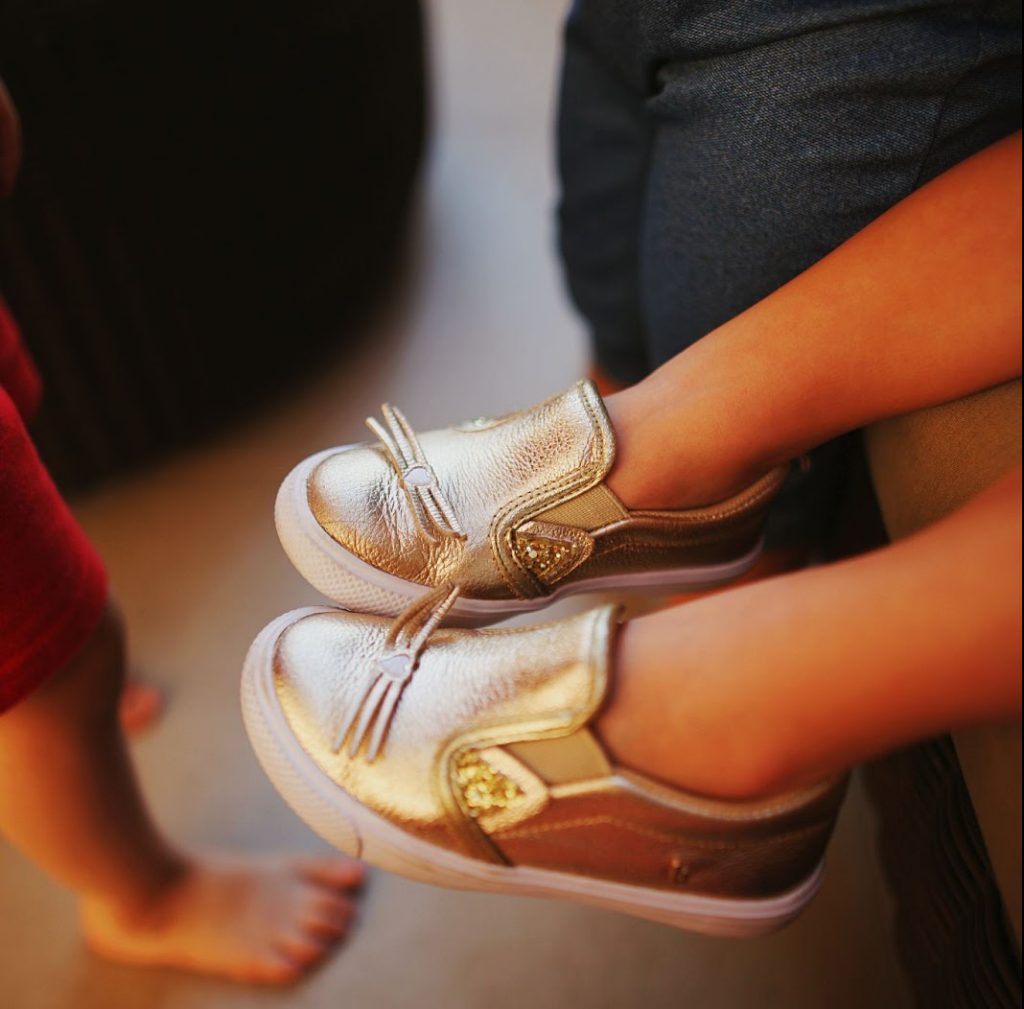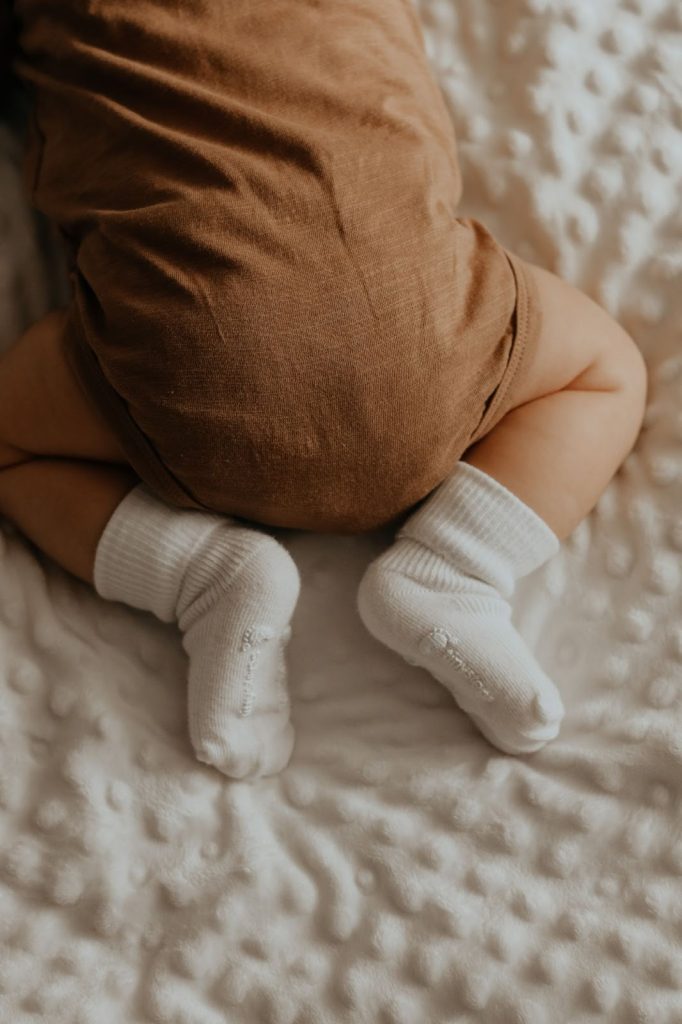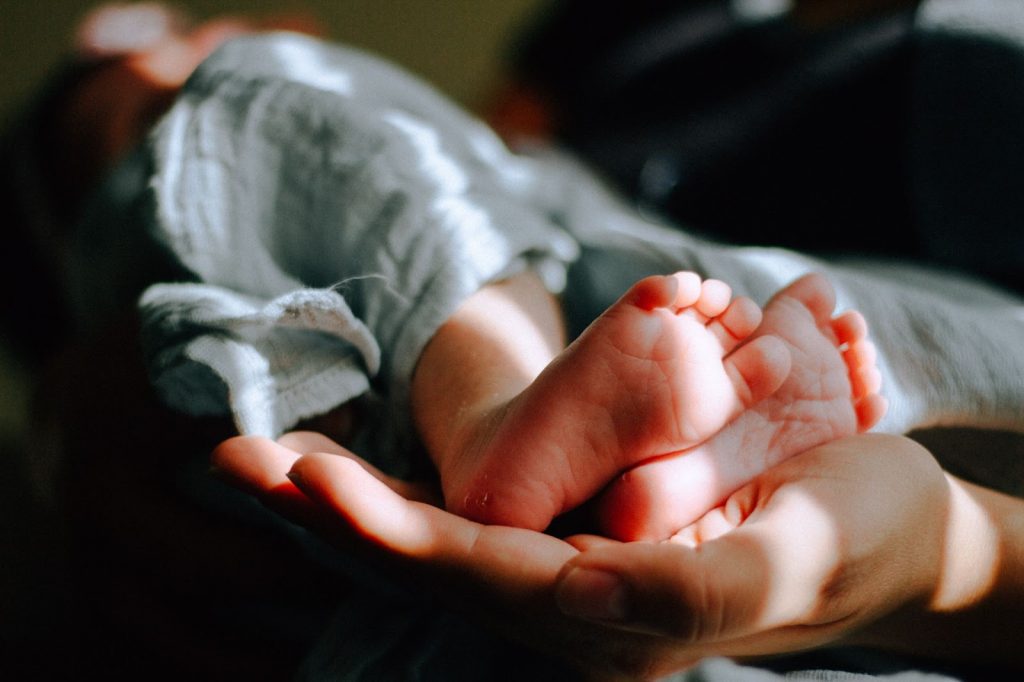
First they learnt to roll, then sit up and now they’re preparing to take those all important first steps. Whilst you wait with a camera in hand to capture the precious moment forever, your mind may flood with questions about their first steps and baby shoes.
Your child’s foot health comes first and finding the right fit, support and materials to match every step of their development builds a solid foundation for their future.

Whether you are looking for baby first shoes for crawling, cruising or when they are toddlering about independently, we want to arm parents with everything you need to know to make the right decision for your baby’s first shoes.
When should I buy my baby’s first shoes?
It really is your own personal choice as a parent when to buy your baby’s first shoes. There are many types of shoes for infants and toddlers that can be used at different stages of their foot growth, from pram shoes and booties to crawling, cruising and walking shoes.
To aid in healthy foot development, it is recommended that babies go barefoot for as long as possible and shoes are only a necessity when they are walking unaided outside.
Over active infants likely won’t care for this advice however, and will want to flex their independence and practice being on their feet as soon as possible.
In this case, lightweight pre-walker shoes that have a flexible sole will aid your baby's growth and protect their tiny toes from hard floors and uneven surfaces before they fully find their feet.
Once confident on their feet, your baby’s first walking shoes will require a hard sole for support.
What type of shoes should I get?
The type of shoes you should get for your baby will depend on their age and environment.
Newborns
Whilst barefoot is recommended, it isn’t always the safest option and pram shoes or booties may be used to protect tiny feet from the elements.

Crawlers
The bones in your baby’s feet are soft at this stage, covered with a protective layer of puppy fat to cushion their growing bones. Your child should be able to feel the ground beneath their feet as much as possible to help them learn to walk.
However, pre walker shoes made from soft materials can provide comfort, protection and extra grip support for babies on the move.
Cruisers
Your baby isn’t a baby for long and sooner or later they will find out how to pull themselves up on everything and anything. Yes, even the family dog!
Whilst your child is in this stage of development shoes with a flexible sole will provide your child with the necessary support they need to explore their new playground or as we call it; the living room.
Walkers
Your baby has taken their hands off the sofa and made their way across the room to you. Now there really is no stopping them and they will want to walk 24/7. It’s time to get your baby their first walking shoes. Make sure they are comfortable, well-fitted and have a firm sole to support and guide your little one in a natural walking motion.

How do I choose the best fit?
Although style and suitability are preferable, the fit of your baby's first pair of shoes is the single most important factor. At this stage your child’s nerve endings may not be completely developed, so they may not feel that their shoes are too small or tight.
It may not be obvious from sight and, with their communication skills still in the early stages, they may not be able to tell you if they are uncomfortable in their new shoes.
Your baby’s feet will need to be properly measured before you purchase their shoes. You will get the most accurate measurement if you measure their feet in the afternoon as baby feet tend to swell during the day.
Find a shop fitting service
Take the hassle out of shoe fitting by taking your child to a shop to be fitted by a professional. Many high street retailers, such as Clarks, offer children's shoe measuring with no obligation to buy there after.
Measure your child’s feet at home
It isn’t always practical to take your child to a shop for a fitting and you may choose to measure their feet at home.
Keep in mind that you will need to measure the length and width of both feet. It is common for each foot to measure at a different size during your child’s development so, in this case, you should buy shoes that fit the largest foot.
You should also keep in mind that it is recommended by The Society of Chiropodists and Podiatrists that a new shoe should be approximately 12-16mm longer than the longest toe.
Your child’s feet should be measured every two to four months as they will likely grow within this time period.
What else should I look for in my baby’s first shoes?
Along with the supportive features, style and fit, you should aim to buy shoes which have:
- Close-cropped soles that prevent tripping
- Room for movement and growth
- Soft leather, canvas or cotton uppers to let small feet breathe
- Lightweight soles to aid walking development
- Fully adjustable fastenings
- Padded ankles for protection and support
You may also be interested in children’s insoles, especially if you are worried about flat feet in children. A foot arch is something that will develop over time, usually by the time your son or daughter is six years old.
How to choose the right socks for your baby
Sock shopping is just as fun as shoe shopping. It is hard to resist those tiny, frilly baby socks and you shouldn’t have to. Babies cannot regulate their temperature and lose heat very quickly. It’s vital you take care to insulate their feet with socks or booties, just keep in mind that they should allow your child’s feet to breathe.
Choose socks made from natural fibres such as cotton or wool instead of nylon which will make their feet sweat.

Where to buy your baby’s first shoes
Many associate their baby’s first shoes with the ever popular trip to Clarks. Whilst this is still a great option for buying babies first shoes in the UK there are many other retailers that offer excellent choices for every style and budget like Next, Bobux, Start Rite and many more.
Tips on how to look after your baby’s feet
Your baby’s foot health is our main concern and we want to provide you with everything to start your parenting journey right. Some simple tips to follow when looking after your baby’s feet are:
- Wash and dry their feet thoroughly daily.
- Trim toenails regularly, but not too short. Try filing if your little one can’t sit still.
- Dress them in loose fitting and light bed clothes.
- Do not restrict their feet in ill-fitting baby grows or socks.
- Encourage muscle development with exercises such as kicking.

You can also look out for certain signs that there may be a foot health issue or foot problem, such as:
- Redness or rashes between toes, around the arches and ankles or any lumps on the soles of feet
- Nail problems such as inflammation or discolouration of toenails
- Bad posture from excessively turned in or out feet
- Deformed toes
Caring for your children’s feet can be a minefield. For more information, advice, and support on choosing your baby’s first shoes or how our range of children's orthotic insoles can provide support and relief, get in touch with a member of the FootActive team today.
